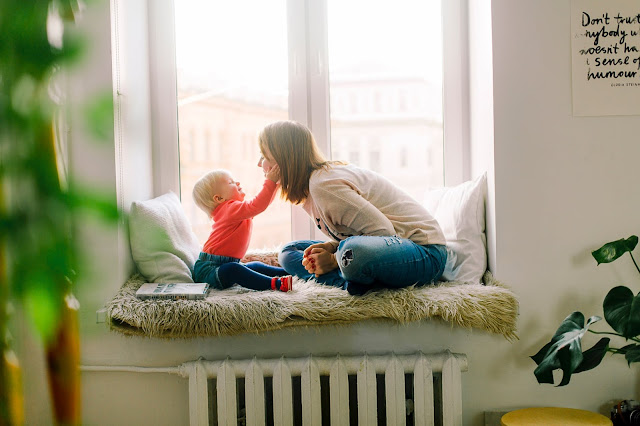Anxiety in children (childhood anxiety) is more common than
you imagine, in fact, between 5 and 21% of the population today, the good news
is that as adults we have many possibilities to help them, in our hands we have
a lot of what children need to be able to lower their levels of stress and
anxiety.
How to realise that a child is having anxiety?
There are different types of stress or anxiety that a child
may be presenting, and it is important that you can differentiate between four
different things:
Excess of stress and physical tension Appearance of "normal" fears of development Separation anxiety Anxiety disorder: episodes of panic, obsessive worry,
phobias or generalised anxiety
1. Excess of stress or physical tension
When a child has excess stress or physical tension it will
manifest with headaches, episodes of very frequent and difficult to calm
tantrums, fatigue, lack of appetite, irritability, sleep problems (different to
how normally he was already sleeping), anger (hitting or throwing things with a
lot of intensity), digestive problems and even skin allergies, difficulty
concentrating with something of interest (children have 15-minute concentration
lapses and we would not expect more from them in the first years ). Among
others.
2. Normal fear of development
On the other hand, there are normal fears throughout the
development of the child, such as fear of strangers, darkness, staying alone,
and even death around 8 or 9 years, fear of some animals or sounds ... etc.
These fears show that they are realizing more things, they are normal and in
theory they should not last long. When these fears make too much of what you
normally do or prevent you from being at peace for a long time or there is no
way to calm you down, then you do need attention because you are probably
developing a phobia or anxiety disorder.
3. Separation anxiety
Then, there is separation anxiety, which is completely
normal starting around 8 months of age until 2 or 3 years old. That is, they
feel anguish when one of their parents or the figure with whom they generated
attachment, moves away or disappears. This separation anxiety is greatly
diminished if you explain to the child what is happening and if you are taught
about how the things that disappear there continue even if you do not see them,
as well as having quality time with him where all possible attention is paid
even for 10 minutes a day.
4. Anxiety disorders
And finally, anxiety disorders are already when a child has
more than 6 months with symptoms such as worry, irritability, fears, anguish,
avoidance of issues that prevent him from carrying out his normal routine,
recurrent physical symptoms such as headache, digestive problems, sleep
problems and more constant, the same tantrums and irritability but more durable
and frequent or, when overeating or doing some behaviour in a compulsive and
almost addictive, and when it shows a very low tolerance to the frustration of
when things do not go the way they want, or an excessive inclination to
perfectionism, concern for their school or social performance, among others.






0 Comments